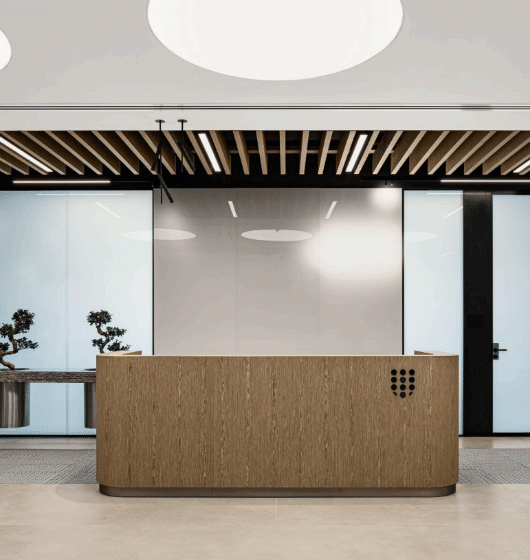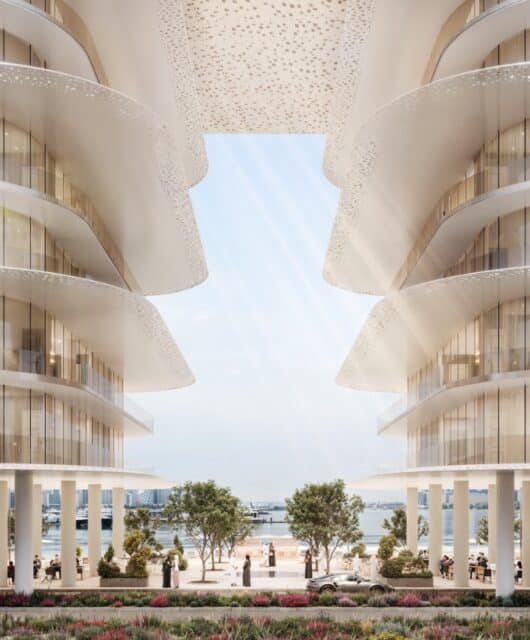 2020 has been a rollercoaster year for many businesses that had to adapt the services they offer and find innovative solutions to meet the needs of their customers whilst at the same time ensuring their safety. Caparol Arabia is one the many companies in the Middle East that joined the fight against COVID-19 by proposing new eco-friendly products such as CapaCare Protect to curb the impact of the virus and promote healthy living. Martin Roscha, Managing Director at Caparol Arabia, discusses with us how paints that are free of volatile organic compounds (VOCs) can be complementary to a healthier lifestyle and hence play a central role in the protection of our environment and well-being.
2020 has been a rollercoaster year for many businesses that had to adapt the services they offer and find innovative solutions to meet the needs of their customers whilst at the same time ensuring their safety. Caparol Arabia is one the many companies in the Middle East that joined the fight against COVID-19 by proposing new eco-friendly products such as CapaCare Protect to curb the impact of the virus and promote healthy living. Martin Roscha, Managing Director at Caparol Arabia, discusses with us how paints that are free of volatile organic compounds (VOCs) can be complementary to a healthier lifestyle and hence play a central role in the protection of our environment and well-being.
Improving Indoor Air Quality For A Healthier Lifestyle
Air pollution is globally known for causing death. According to a study from Greenpeace, there are 4.5 million annual premature deaths worldwide due to polluants released by high-emission power station and vehicles exhausts. The Middle East registers 65,000 deaths each year due to pollution. However, did you know that in fact indoor air polluants are known to be more prone to lead to health hazards than outdoor? The Environmental Protection Agency (EPA) ranked indoor air pollution among the top five environmental dangers. Market research shows that pollution caused by construction penetrates buildings and thus impacts people’s health.
What is often overlooked is the interaction between paint and indoor air quality, and the importance to carefully select the right paint solution. In the midst of the coronavirus global pandemic, as its consequences continue to unfold, we have a renewed understanding of the significant role the buildings play in promoting public health and wellbeing. Healthy painting is directly correlated to healthier lifestyle. It is known for providing peace of mind during moments of relaxation in your home.
Conventional paints mostly contain of toxic products, and as a result, people are repelled by the smell and often have to wait a few days before being able to habit the room. But even once the smell has passed, other problems remain due to the composition of these paints: certain heavy metals, solvents, petroleum derivatives, etc. These volatile organic compounds (VOCs) are still harmful to our health and environment even when the paint has dried.
On the other hand, eco-friendly paints significantly reduce any harmful impact, and their design is particularly beneficial to the environment. Their manufacture displays a less toxic footprint than conventional paints, and they are completely odorless and are easily applied on all surfaces. Eco-friendly paints are also permeable, letting the walls breathe and yet also creating a perfect finishing and a great lifespan. Contrary to certain common beliefs, being natural doesn’t prevent these paints from delivering a great performance.
Indoor air quality should not be taken lightly, especially in the GCC where people are exposed to high levels of indoor air polluants. This is mainly due to the fact that these countries record high temperatures that force people indoors for many months of the year. Today, the impact of COVID-19 has driven this trend further. Air pollution can cause serious health side effects that can result in respiratory diseases such as asthma or even lung cancer. When it comes to indoor pollutants, the greatest concern are VOCs. The top source of VOC emissions coming second only to vehicles is paint. At high concentrations, these VOCs prove to be very harmful to residents who have been exposed to them for a long time. These VOCs are released into the indoor atmosphere from paints containing solvent. It is the solvent (one of the basic components of all paints), which released into the air pollutes the latter.







